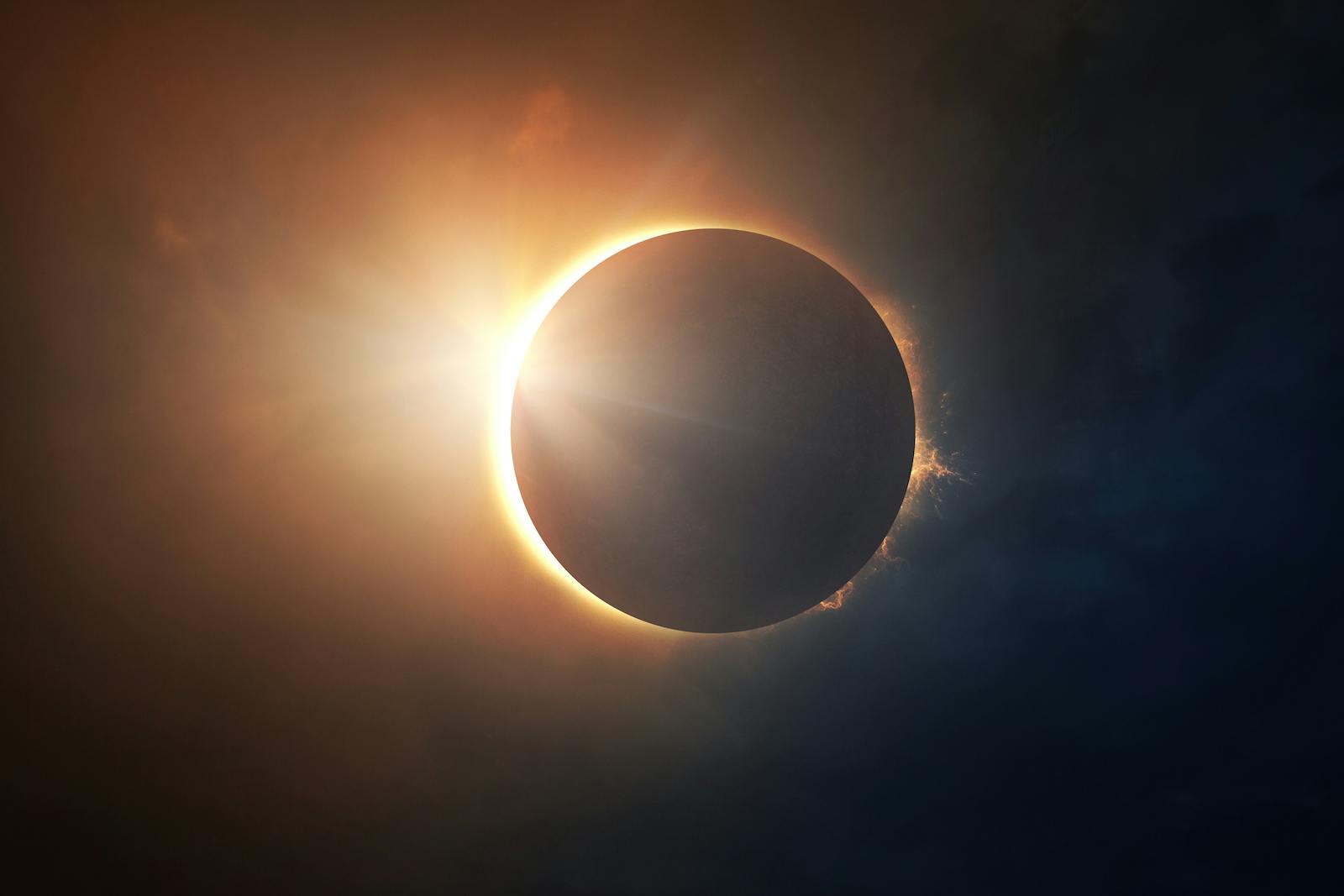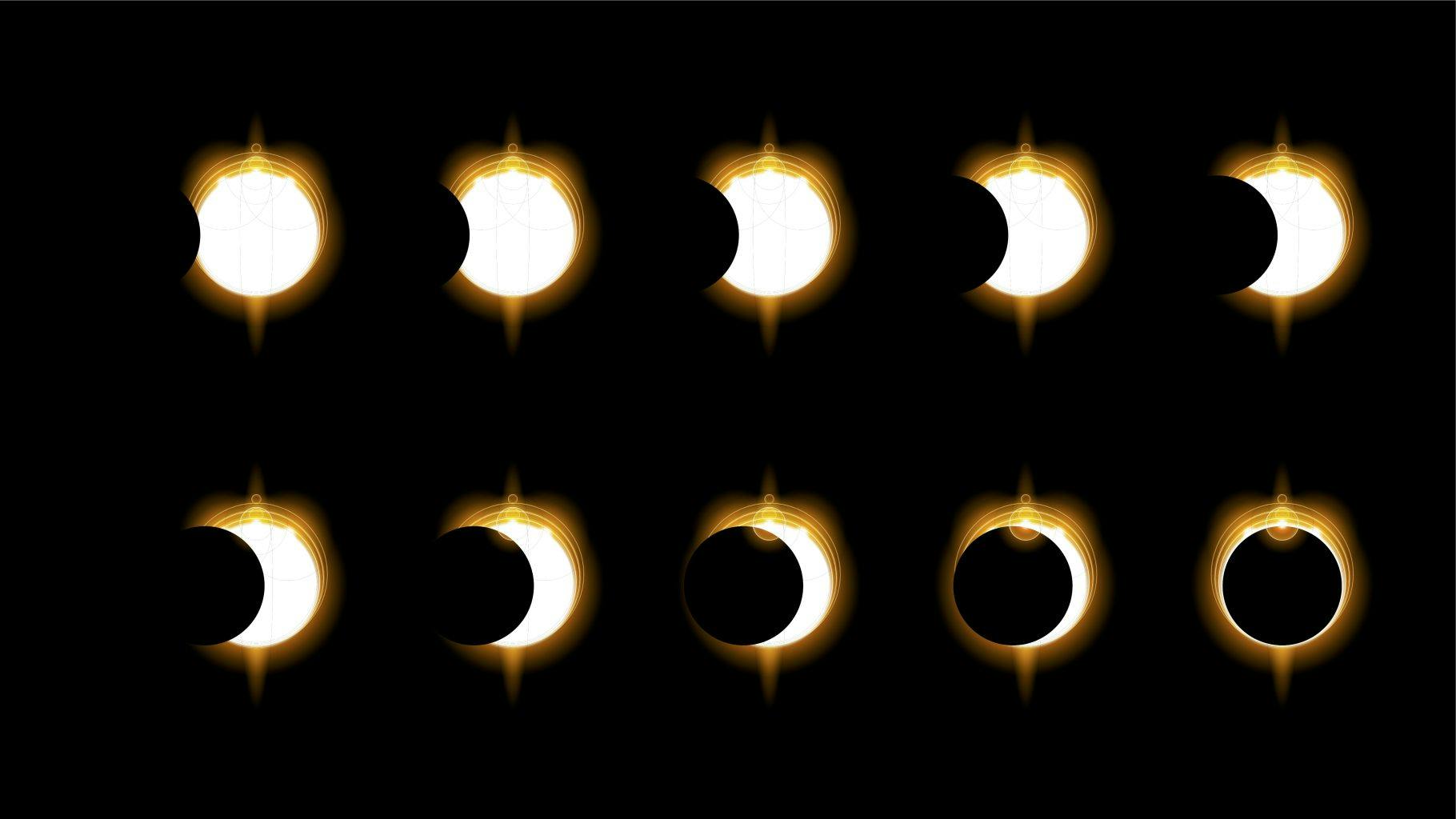Solar Eclipse 2023: Get the lowdown on next week’s rare hybrid eclipse

Article by Dr. Robin Cook from UWA’s International Centre for Radio Astronomy Research.
The coastal WA town of Exmouth on the Ningaloo Reef has gained another reason to be on everyone’s bucket list, it will be the home of a solar eclipse. Years of planning have prepared residents and shop owners for a deluge of visitors to the region on April 20th, eager to spot this once-in-a-lifetime astronomical spectacle.
A solar eclipse occurs when the moon passes directly in front of the sun, effectively turning out the lights for the tiny area lucky enough to be situated in the path of the Moon’s shadow. However, not all solar eclipses are built the same, some only partially block out the sun. For a total solar eclipse to occur, the moon must appear large enough to cover the sun entirely, otherwise, a ring of sunlight remains, creating what’s known as an annular (or “ring”) solar eclipse.
What’s special about the Exmouth eclipse is that it’s in fact a hybrid eclipse, switching from an annular to a total eclipse mid-way through — it’s the rarest type of solar eclipse, occurring only 3% of the time.

Total solar eclipses occur every 18 months somewhere on the face of the Earth. However, about 70% of the Earth’s surface is covered in water, meaning that the path of totality swept out by the moon’s shadow is rarely visible near any major city or town. Exmouth will be the most accessible place on earth to view the April 20th solar eclipse, with the only other landmasses being Timor-Leste and a splattering of islands across Indonesia.
Whilst the passage of the moon across the face of the sun lasts up to three hours, only those around the town of Exmouth will descend into complete darkness, but just for a brief 57 seconds. During this time, temperatures drop, winds change direction and animals will begin scrambling to return to their nighttime residences. Stars and planets usually reserved for the night will reveal themselves amongst an otherworldly display of light from the whispy corona that makes up the sun’s atmosphere.
In those final moments before the sun disappears behind the moon, a phenomenon takes place where beams of sunlight shine through the undulating lunar surface creating the so-called Baily’s beads or diamond ring effect.
Subscribe to our free newsletter!

Even though the path of totality only spans a 41.4km wide track across the Earth, a partial eclipsing of the sun will be experienced by much of Western Australia. For those in the Perth region, the moon will appear to cover 70% of the sun’s surface, which although that sounds like a lot, might be less noticeable than an everyday cloud passing overhead.
It isn’t just the sky that looks peculiar during solar eclipses, so too do the shadows on the ground change form. Because the moon is covering a part of the sun, you may notice a crescent projection in the shadows cast by trees and buildings. In fact, this is one of the main ways to view a solar eclipse. For example, sunlight passing through a small hole made on a piece of paper will project an image of the sun being masked by the moon — this is called a “pinhole viewer” – timeanddate.com break it down pretty simply for you here:

When viewing any solar eclipse (partially obscured or not), it’s never safe to look directly at the Sun or a reflection as the intense ultraviolet light will cause irreversible damage to your retina. It’s best to observe the Sun using certified eclipse viewing glasses from a reputable seller or via an indirect method.
Several astronomy-inspired events are set to happen in Exmouth and the surrounding region including Onslow as part of The Dark Sky Festival, promising to showcase the beautiful, untouched night skies that WA has to offer. A live stream of the solar eclipse can be viewed online or in various locations around Perth, including the Digital Tower screen in Yagan Square.
With thanks to the International Centre for Radio Astronomy Research.